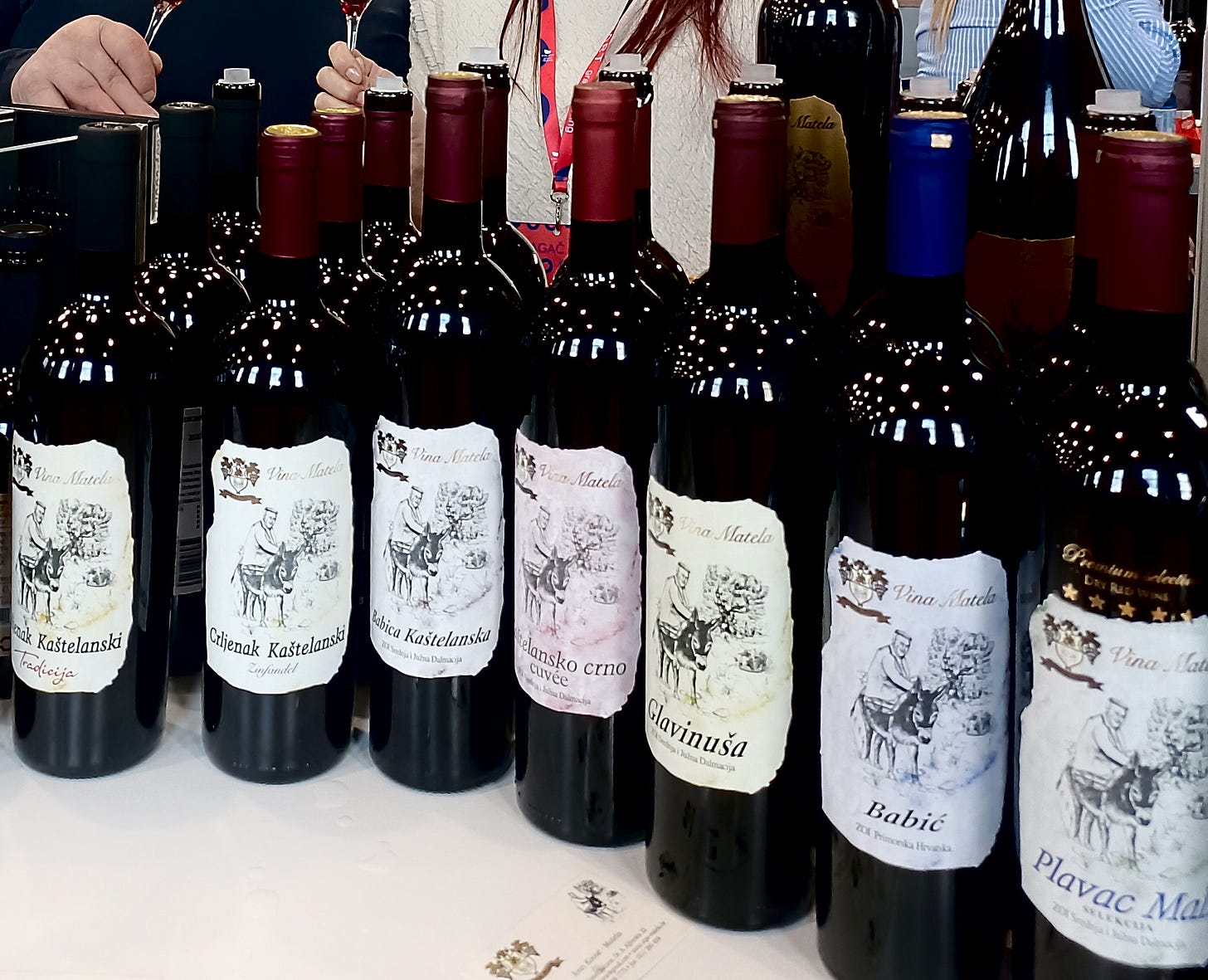Does Wine Label Design Matter?
Sometimes visual cues are everything.
If you saw these bottles on the shelf in a wine shop, would you consider buying one? I’m not sure I would. The labels look amateurish, as if they were designed some time in the last century. What does that say about the wine?
Of course you shouldn’t judge a book by its cover, and that well-worn cliché is vindicated in this case. The wines are delicious examples of Dalmatia’s native red grapes, some very rare. They have freshness, vibrant fruit and an appealing rustic touch. I tasted them with winemaker Ivan Matela, at this year’s Vinart wine fair in Zagreb.
Admittedly, these labels were probably never intended to appeal beyond Ivan’s local customer base, although his daughter told me that they produce up to 50,000 bottles a year - which is a reasonably substantial amount to be selling purely on the domestic market.
Here’s another Dalmatian red wine label, also a delicious wine that I tasted at the same event.
If both Vina Matela and Testament’s Tribidrag were on the shelf together, I suspect most would gravitate towards the latter. It’s eye grabbing, intriguing and informative for those who don’t know the origins of the Tribidrag grape variety1. Quite a contrast to Matela’s kitsch, homemade looking design, with only hard-to-pronounce Croatian names and words.
I have plenty of wine importer and distributor friends who would refuse outright to work with Vina Matela, purely on the basis of the labels. Perhaps that seems harsh or even shallow. After all, if it’s good wine?
Let’s reflect. What exactly is the purpose of a wine label?




